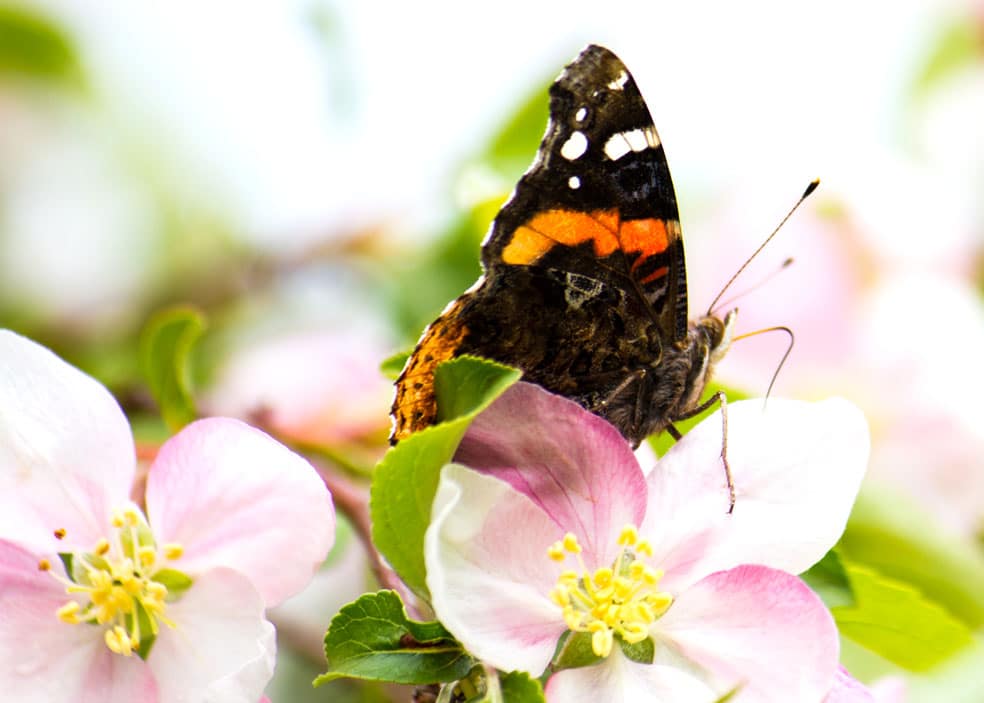
After yesterday’s sunny warmth, flower buds are opening with the speed of time-lapse photography. I could actually watch the blossoms spring open on my weeping ‘Red Jade’ crabapple. The tree is now covered by dozens of red admiral butterflies (Vanessa atalanta), competing with bumblebees for nectar and doing a terrific job of pollinating the flowers. The tree is quivering with activity and I can look forward to a bumper crop of ornamental crabapples this autumn.
The butterfly migration began early this spring with the arrival of an unusual number of red admirals. Clouds of them have been swept in by high winds from the south, and they descended on gardens in hordes, covering flowering trees and working their way through spring bulbs and early flowering weeds. They’re easily recognizable by their velvety brown wings banded in bright orange and tipped with white blotches on the dorsal forewings. There’s sometimes confusion between the red admirals and American lady or painted lady (Vanessa cardui) butterflies, which have identical colours, with the orange pigment in the central part of their wings. But if you see a cloud of orange and brown butterflies in your garden this week, they are surely red admirals.
It goes without saying that this is a very good sign of a bountiful summer to come. Red admirals are wonderful pollinators, and will sip nectar from flowers of ornamental and food plants, as well as dandelions and thistles. The first wave this year is larger than ever seen before, according to scientists at the Royal Ontario Museum and the Toronto Entomologists’ Association.
These initial butterflies will lay eggs and start a potential two to three generations hatching this season. The caterpillars are fussy about food and will eat only stinging nettles (Urtica dioica), and how good is that? If you’ve ever had a painful encounter while weeding stinging nettles, you’ll know how fortunate it is that red admiral caterpillars want to eat them. When the eggs hatch, emerging brown caterpillars eat nettles for a while, then roll themselves up in a leaf to pupate, later emerging as a red admiral butterfly. Take care not to damage them in their leaf cocoons, and they’ll soon reward you by pollinating your tomatoes and peppers.
Further good news is that my little hummingbird has returned. It was seen yesterday feeding in the ‘Olga Mezitt’ rhododendrons that are in full, lipstick-pink bloom. I began a flurry of activity, changing the syrup in two hanging feeders and setting out “lures” of red salvias and geraniums acquired this week.
This hummer has been coming to the garden for several years, stopping briefly in May, and then again in August, on its annual migration. It’s probably headed to Algonquin Park in northern Ontario, where I see dozens around the feeders there in late summer. Last year, my hummer discovered the feeder hung in a front garden tree, and I hope that will encourage a longer visit this spring. I certainly have lots of good nesting sites to offer, and a steady diet of nectar from thistles and dandelions, as well as a la carte sugar water service from the kitchen. Yes, the garden is full of life, and it’s good.
Other posts by Judith this week:
Posts by Judith last week:
